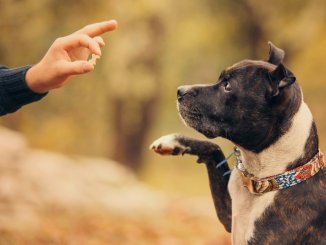A purebred dog is a dog that was bred from parents which are members of a recognized breed, and whose ancestors, for many generations back, belong to a recognized breed. These dogs have unmixed lineages and need full blood genetics above 87.5% to be considered purebred by breeders.
Purebred dogs are referred to as “pedigreed” only when their lineages are recorded.
A few popular examples of purebred dogs are:
- Golden retrievers
- Poodles
- German shepherds
- Bulldogs
- Beagles
- Daschunds
- Great Danes
TABLE OF CONTENTS
What Is a Purebred Dog?

A purebred dog is a dog whose ancestors have been bred for many generations from dogs of a recognized breed. The American Kennel Club (AKC) defines a purebred as a dog whose mother and father are members of a recognized breed, and the ancestry of the dog consists of the same breed over many generations.
An example of a purebred dog is the cane corso, as this Italian breed’s ancestry can be traced back as far as ancient Roman times. The cane corso is a large dog that was bred for hunting wild boar.
Like the cane corso, other purebred dogs were bred over many generations to develop traits for certain tasks (e.g., hunting, pulling sleds, guarding, herding). The dog’s features, strengths, and general ability were factors taken into account when breeding for a particular purpose.
In order to consider a dog purebred, according to AKC standards, the dog needs to measure up to that particular breed’s official breed standard, which is a written description of the characteristics and features of a perfect specimen of the breed.
The breed standard specifies details relating to the type, temperament, gait, and posture of the breed, and pinpoints the characteristics required for the originally intended function of the breed.
Advantages
Buying and raising a purebred dog has many advantages, including the dog’s predictable temperament, size, and appearance.
Predictable nature
A purebred dog is more likely to have a predictable temperament. This is especially important when bringing a dog into a household with children, where an unpredictable dog may suddenly become aggressive and cause serious harm to a child.
Knowing the dog’s likely temperament makes it easier to decide if a particular breed is right for you.
Predictable appearance
A purebred dog possesses certain clearly defined physical characteristics and has a predictable appearance. Details like the size, build, and weight of the dog must be considered when choosing a dog to meet your needs, your available space, and facilities.
Knowing the expected length and texture of a particular breed’s coat enables you to decide if the dog matches your ability to care for its coat and keep up with the dog’s other grooming needs.
Predictable health conditions
Purebred dogs have more predictable health qualities and issues. Certain breeds are more susceptible to medical conditions like hip dysplasia or respiratory difficulties.
Knowing in advance about potential health issues creates an awareness of the importance of regular check-ups, and empowers you to decide if you’re willing to take on a dog that might develop these problems later in life.
Reputable breeders
Purebreds usually have more reputable breeders who do health checks on the parents to rule out potential genetic or hereditary disorders, and the breeder ensures that the dog is fully vaccinated. The breeder usually provides documentation and guarantees when selling a purebred.
Participation in dog shows
Only purebred dogs are permitted by the AKC to participate in dog shows. If you want to show your dog and enter it in competitions, you will need proof from the breeder that the dog is purebred.
Disadvantages

Purebred dogs have certain disadvantages due to the inbreeding that has occurred throughout dog breeding history.
Medical problems
Some breeders believe in inbreeding to retain or emphasize certain characteristics within the breed. Because of the limited gene pool, inbreeding can result in dogs with genetic disorders, which lead to medical problems. Some common medical problems that are perpetuated and exacerbated by inbreeding include:
- Skeletal conditions: Breeds like German shepherds, Great Danes, and retrievers suffer from hip dysplasia, which is a painful condition common in larger breeds. Dogs suffering from hip dysplasia usually have limited mobility and often become obese due to their inactive lifestyle. The extra weight, in turn, exacerbates the condition, leading to a vicious cycle.
- Respiratory problems: Breeds like pugs, have a distinctive short snout and compressed jaw and nose, limiting their ability to inhale deeply. This causes respiratory complications.
- Heart disease: Breeds like boxers and cocker spaniels are prone to a heart condition called pulmonic stenosis, which is a heart defect obstructing blood flow to the heart, and inhibits oxygenation in the circulatory system.
- Eye problems: Breeds like Labrador retrievers and French poodles are two of the numerous breeds that are more likely to develop cataracts, often resulting in total blindness.
- Neurological conditions: Breeds like border collies and retrievers are among the dogs that are susceptible to disorders like epilepsy, which causes seizures.
- Thyroid problems and diabetes: Breeds like Doberman pinschers and Irish setters are among the breeds at high risk for hyperthyroidism, which tends to be more prevalent in spayed females than unspayed dogs.
Expense
Breeding purebred dogs is costly because of the related medical expenses. Reputable breeders limit the number of litters produced by each set of parents, limiting the potential income from the parents. The breeder recovers these costs through high selling prices.
Owning a purebred dog is expensive because regular medical check-ups are necessary.
Cheapest Purebred Dogs

The cheapest purebred dogs include:
Small Purebred Dogs
Small purebred dogs include:
- Chihuahua
- Pomeranian
- Yorkshire terrier
- Toy fox terrier
- Cavalier King Charles spaniel
- Daschund
- Maltese poodle
- Shih tzu
- Pug
Responsible Breeding and Dog Ownership
The practice of breeding purebred dogs can lead to inherited health conditions and disorders that can be painful for the dogs and even result in their premature death.
It is estimated that as many as one in four purebred dogs has a serious genetic problem.
While there are many risks associated with the breeding and buying of purebreds, responsible breeding and ownership are possible.
If you are determined to get a purebred dog, seek out responsible breeders who can provide ancestral records of the animals which can all but eliminate the risk of inbreeding issues. Alternatively, look into adopting a dog from your local shelter, as it is estimated that at least 25 percent of dogs in animal shelters are purebred.
Should You Get a Purebred Dog?
There are pros and cons to getting a purebred dog. You should get a purebred dog if it’s important to you to get a dog with a predictable temperament and health profile.
If you enjoy dog shows and would like to enter your dog, a purebred is the right dog for you.
Don’t get a purebred if you’re on a tight budget. The high price and the medical expenses associated with owning a purebred will be difficult for someone with limited resources.








Be the first to comment